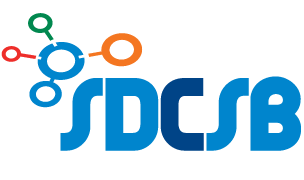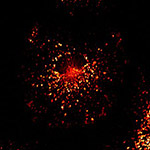Genetics, Bioinformatics and Systems Biology Colloquium
Thursdays, 12:00 pm – 1:00 pm
UC San Diego, Powell-Focht Bioengineering Hall, Fung Auditorium
Complete schedule here
Speaker: Dr. Dieter Wolf
SBMRI NCI-designated Cancer Center Proteomics
Global analysis of host-pathogen interactions that regulate early stage HIV-1 replication
Dieter Wolf et al.
Mol. Cell. (2009)
Summary
eIF3 promotes translation initiation, but relatively little is known about its full range of activities in the cell. Here, we employed affinity purification and highly sensitive LC-MS/MS to decipher the fission yeast eIF3 interactome, which was found to contain 230 proteins. eIF3 assembles into a large supercomplex, the translasome, which contains elongation factors, tRNA-synthetases, 40S and 60S ribosomal proteins, chaperones, and the proteasome. eIF3 also associates with ribosome biogenesis factors and the importins-β Kap123p and Sal3p. Our genetic data indicated that the binding to both importins-β is essential for cell growth, and photobleaching experiments revealed a critical role for Sal3p in the nuclear import of one of the translasome constituents, the proteasome. Our data reveal the breadth of the eIF3 interactome and suggest that factors involved in translation initiation,ribosome biogenesis, translation elongation, quality control, and transport are physically linked to
facilitate efficient protein synthesis.
Speaker: Dr. Olivier Harismendy
UCSD School of Medicine
9p21 DNA variants associated with Coronary Artery Disease impair IFNγ signaling response
Olivier Harismendy et al.
Nature. (2011)
Summary
Genome wide association studies (GWAS) have identified SNPs in the 9p21 gene desert
associated with coronary artery disease (CAD)1–4 and Type 2 diabetes (T2D)5–7. Despite
evidence for a role of the associated interval in neighboring gene regulation8–10, the biological underpinnings of these genetic associations to CAD or T2D have not yet been explained. Here we identify 33 enhancers in 9p21; the interval is the second densest gene-desert for predicted enhancers and 6 times denser than the whole genome (p new, open-ended approach to detect long-distance interactions (3D-DSL), we find that in human
vascular endothelium cells (HUVEC) the enhancer interval containing the CAD locus physically
interacts with the CDKN2A/B locus, the MTAP gene and an interval downstream of INFA21. In
HUVEC, IFNγ activation strongly affects the structure of the chromatin and the transcriptional
regulation in the 9p21 locus, including STAT1 binding, long-range enhancer interactions and
altered expression of neighboring genes. Our findings establish a link between CAD genetic
susceptibility and the response to inflammatory signaling in a vascular cell type and thus
demonstrate the utility of GWAS findings to direct studies to novel genomic loci and biological
processes important for disease etiology.













